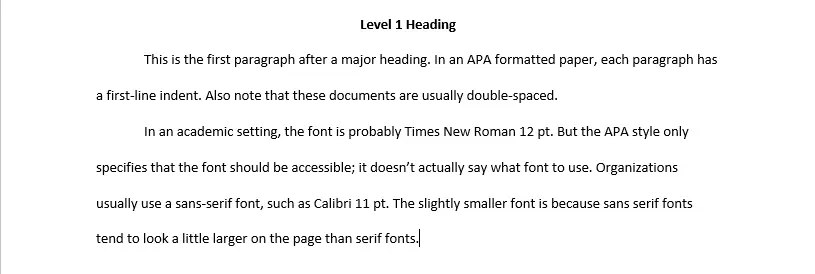 3 ways to write paragraphs
3 ways to write paragraphs
Here are three ways to write paragraphs in documents, depending on the context.
Not all paragraphs are the same. In business, you probably learned that all documents should be written in block paragraphs. Every paragraph is left-aligned, with no special first-line indenting. But when you were an undergraduate student, you were probably taught to write every paper with first-line indenting. That’s the academic way to write a paper. Both are the right way to do it, for the type of writing that they are.
Here are three ways to write paragraphs in documents, depending on the context:
1. Business writing
In business writing, everything is a block. Think “rectangles.” Paragraphs are blocks, section headings are blocks, and titles are usually blocks. Unless your organization has a specific document template they want you to use—and that template will provide its own formatting—then assume that business writing is just block paragraphs. Here’s an example:
Heading 1
This is the first paragraph after a major heading. In business writing, each paragraph is a block paragraph, with no special first-line indenting.
Each paragraph in a business document has a bit of space between them, to make them easier to read.

2. Academic writing
There is no one academic writing style, every major program follows their own style according to their focus. The MLA style is quite popular, APA is another, and so on. Technical writing programs follow the APA style defined by the American Psychological Association. This is still very similar to MLA style, so even if you didn’t learn APA you will probably recognize the first-line indented paragraphs. Here’s a sample:
Level 1 Heading
This is the first paragraph after a major heading. In an APA formatted paper, each paragraph has a first-line indent. Also note that these documents are usually double-spaced.
In an academic setting, the font is probably Times New Roman 12 pt. But the APA style only specifies that the font should be accessible; it doesn’t actually say what font to use. Organizations usually use a sans-serif font, such as Calibri 11 pt. The slightly smaller font is because sans serif fonts tend to look a little larger on the page than serif fonts.

3. Technical writing
Professional technical writing uses a combination of these two styles. Look at any technical manual or book and you will probably see the same formatting: the first paragraph after a chapter title or section heading is always a block paragraph, and paragraphs are first-line indented after that. Some authors also use a block paragraph after a major display (such as a chart or graph or source code sample) but not always. Here’s an example:
Heading 1
This is the first paragraph after a major heading. In technical writing, the first paragraph after a section heading or a major display (such as a data display) is a block paragraph, with no special first-line indenting.
However, each paragraph after that should be a first-line indent paragraph. The best way to do this formatting is to modify the styles: define a First Line Indent paragraph style, then modify Heading 1 so the next style is Normal (a block paragraph) and the style after Normal is First Line Indent.

